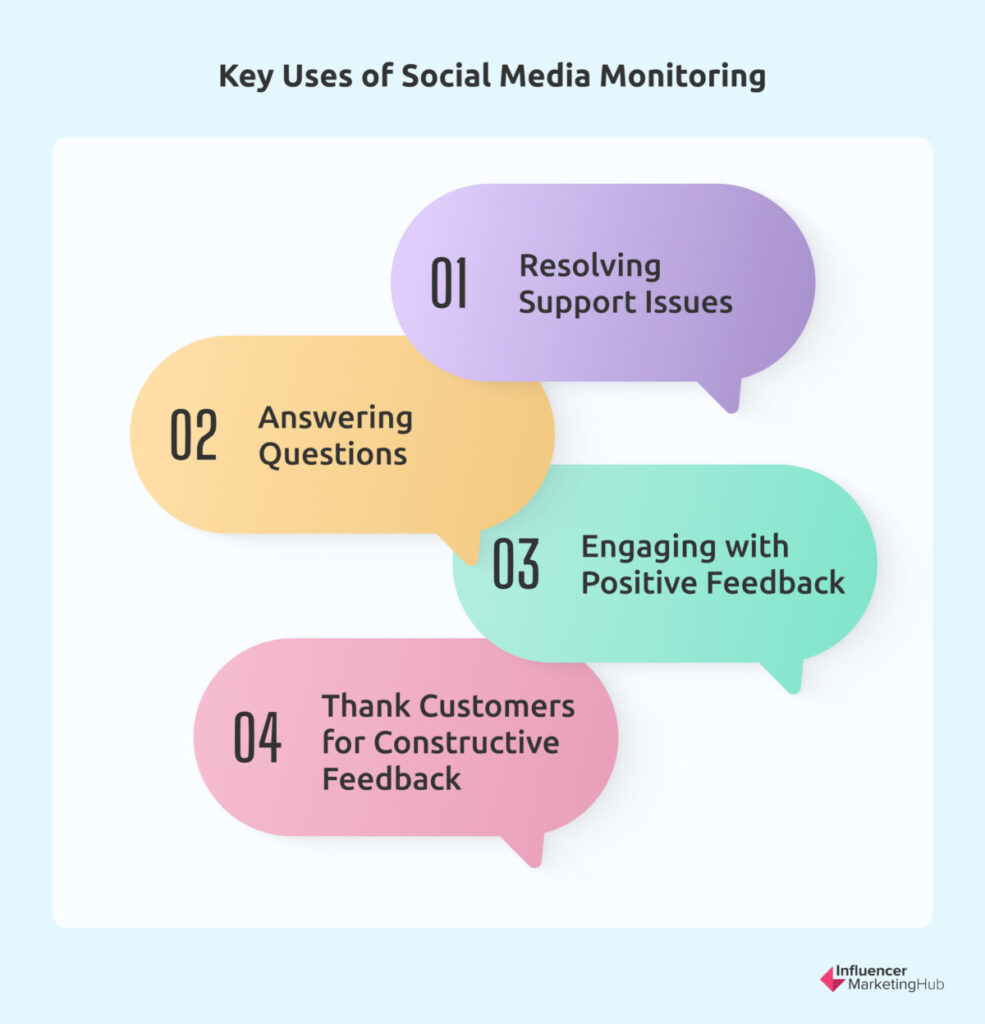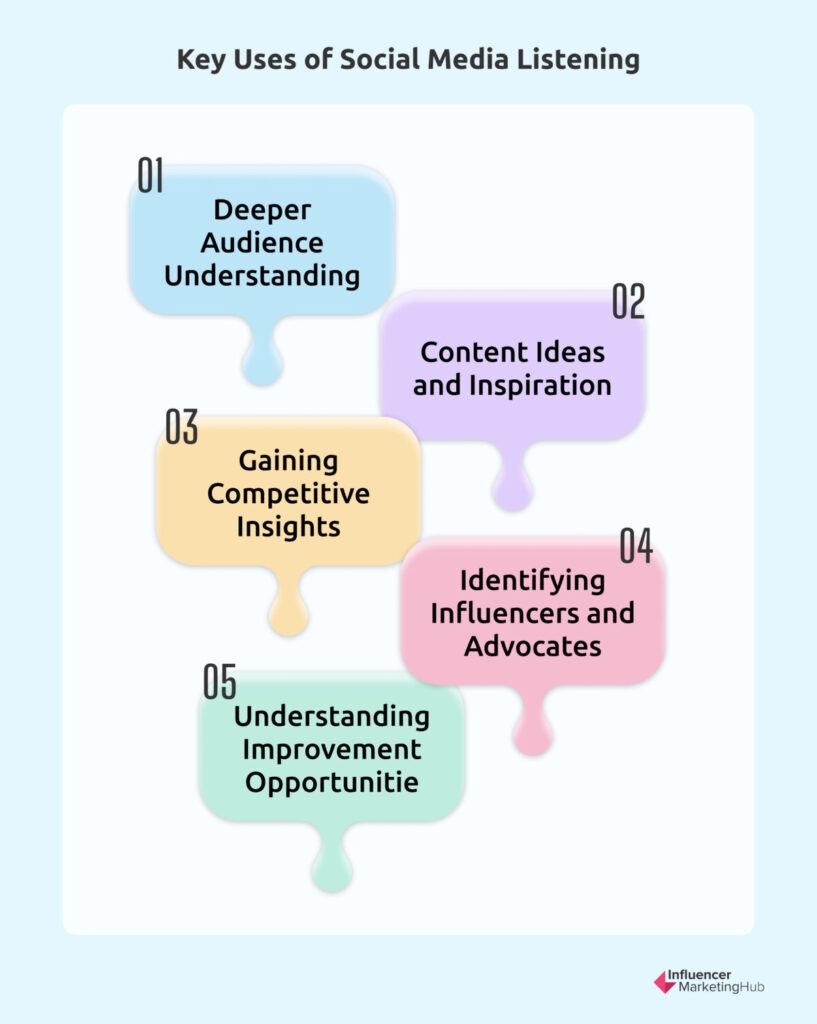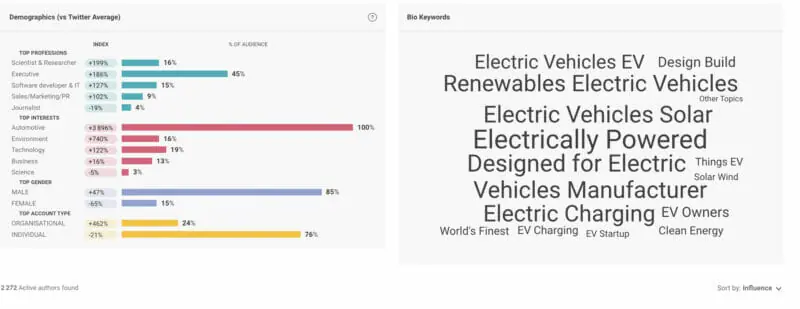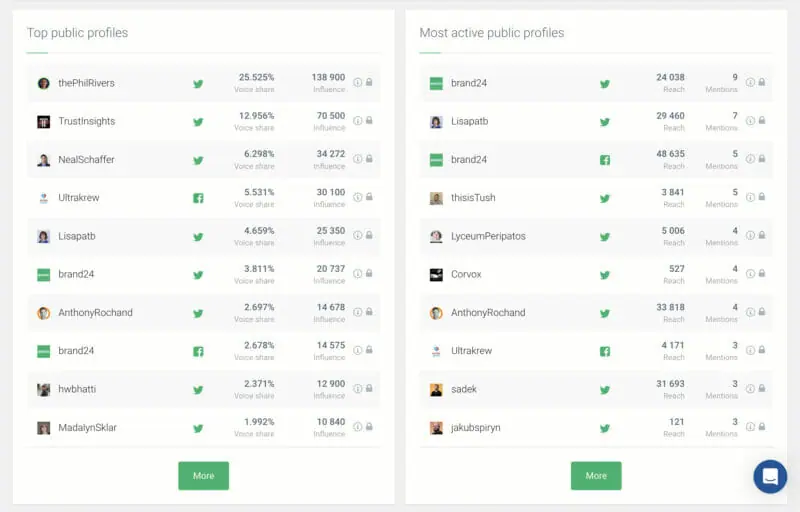Connecting with your audience on social media takes a lot more than simply putting out content and expecting them to respond. Rather, you need to take a closer look into their conversations to understand their needs, pain points, and expectations. Brands often look to social media monitoring and social media listening to gain insights into their audience.
However, it’s easy to get the two terms confused. In this post, we give you a breakdown of the key differences between social media monitoring and social media listening. To give you an even better understanding, we also explain their practical uses for brands. Let’s get into it.
Social Media Monitoring vs. Social Media Listening: What’s the Difference?:
What is Social Media Monitoring?
Social media monitoring is the process of tracking social media conversations that are directly related to your brand. So it could involve tracking specific brand mentions, comments, and tags and providing an appropriate response. Beyond identifying posts and comments in which people directly tag your brand, social media monitoring lets you keep track of any mentions of your brand name and product names along with their common misspellings.
Main Uses of Social Media Monitoring
With the ability to keep track of important conversations about your brand, social media monitoring is a crucial tool for providing customer service via social media platforms. Here are some of the main uses of social media monitoring for brands.

Resolving Support Issues
One of the main uses of social media monitoring is to identify and resolve customer support issues. Social media is widely used and accessible among the masses, with many consumers using it as a channel to contact brands for support. In fact, it’s now the third most-used channel for contacting brands after email and website/application chat. That means people are going to come to you on social media to get their problems fixed or share their complaints.
It’s important to note that support queries and complaints need a quick response because you’re dealing with customers who are already disappointed. The promptness of your response and resolution will largely determine their satisfaction levels and even their loyalty toward your brand.
That’s exactly why social media monitoring is so important as it allows you to quickly identify any negative feedback, complaints, or support queries. Some social media monitoring tools will let you set up alerts so you can get notified about these mentions as they come in. This would then allow you to swiftly address the issue and show your customers that you care about them. Here’s an example of Sprout Social addressing a customer’s problem even though the company wasn’t directly tagged.
Hey, there! Due to a technical problem, the Sprout application was not available for a few minutes yesterday. Our team implemented a fix and you should not face issues now. We apologise for the inconvenience. Please let us know if we can help you with anything else. 🙂
— Sprout Social (@SproutSocial) May 24, 2023
Answering Questions
Sometimes, people may also mention your brand because they’re looking for information. They’re not necessarily existing customers with a support query but rather potential customers who want to get more info before making a decision. Social media monitoring tools allow you to closely keep track of these mentions so you can quickly grab the opportunity by providing a helpful answer.
The questions may be anything from the features of your product to the recommended plan for their needs. Here's an example from Moz, where the team answered a potential customer’s question about the types of discounts they can get.
If you're already signed up for a free trial, you cannot apply the Spring Sale discount yourself. Please email us about this at hel[email protected] so we can take care of this for you! Thanks. 😀
— Moz (@Moz) May 15, 2023
Engaging with Positive Feedback
Some customers may simply be talking about your brand to show their appreciation. While you don’t necessarily have to respond to these positive brand mentions, acknowledging them is the perfect way to reciprocate and show some love. Social media monitoring lets you keep track of positive feedback so you can thank your customers or simply engage with them to show how much you appreciate their business.
For example, in the following brand mention for Chewy, the customer asks their followers a fun question about which of their pets “wore” the Chewy box better. Thanking the customer for buying Chewy may be better than simply ignoring them. But since the customer isn’t necessarily addressing the caption to the brand, Chewy decided to respond to the question instead. The team responded that it’s impossible to choose between the two pets.
Thank Customers for Constructive Feedback
In some cases, you may have customers who are happy with your product but still have some suggestions on how you can make improvements. These can provide you with valuable insights into what customers want and expect from your brand. Even if you’re not actively looking for ways to improve your product or service, thanking them is the least you can do to show them that you appreciate the feedback.
Social media monitoring lets you keep track of these suggestions so you can respond to your customers and thank them. See the following example of how Semrush thanked a customer for sharing their feature request.
Hi, thanks for the feedback! We'll send that to our dev team, and we'll see what we can do 🔥
— Semrush (@semrush) May 12, 2023
What is Social Media Listening?
Social media listening is the process of tracking and analyzing social media conversations relevant to your brand so you can get a better understanding of your audience. It involves a bit of social media monitoring but instead of specifically focusing on brand and product mentions, you’ll be listening in on conversations related to your industry and around specific topics. So it provides you with valuable insights that can inform your marketing decisions.
Main Uses of Social Media Listening
With social media listening, you can gain valuable conversational insights to answer questions and inform important decisions. Here’s a closer look at some of the main uses of social media listening for brands.

Understanding Your Audience on a Deeper Level
Social listening gives you in-depth insights into conversations that your audience is participating in. Based on this, you’ll be able to get a better idea of who your audience is and what’s important to them. You can analyze those conversations to understand their biggest interests and pain points as well as their values and motivations. This will then help you understand how you can shape your marketing strategies to better resonate with them.
Keep in mind that these conversations don’t necessarily have direct brand mentions. Instead, you’ll be listening in on conversations around a specific industry or topic. For example, if you run a café, you may listen in on social media conversations that are taking place around topics such as coffee, coffee shops, etc. So you can discover insights such as:
- Why people go to coffee shops (to hang out with friends, to work, to go on a date, etc.)
- What types of coffee they prefer
- Where most coffee shops are lacking (e.g. not having proper tables to work, playing distracting music, etc.)
- Whether there are any new coffee variations that are trending
These insights will then be able to inform your marketing strategy and your larger business decisions. Some social media listening tools will even provide you with a demographic breakdown of the people engaging in these conversations so you can understand the type of audience you should be targeting.

Source: influencermarketinghub.com
Finding Ideas and Inspiration for Content
Social media can be a valuable source of inspiration for new content. The conversations that people are having on social media can give you an idea of what people are interested in discussing and what types of information they’re seeking. As such, your social media listening efforts will help you come up with ideas for content to address your audience’s needs.
For example, you might notice that many conversations about graphic design involve people seeking tips on creating graphics for Instagram Stories. You can then use this information to write an informative blog post on design tips for Instagram Stories. You may also share some free Stories templates that people can customize.
Gaining Competitive Insights
With social media listening, you can get a clear idea of what people are saying about your biggest competitors. You may already be able to track the numbers such as their audience growth and engagement rates. However, this can only tell you so much as it doesn’t go beyond their own social media account. Listening can uncover all the conversations that are taking place about the competition across social media.
What are the main things that people seem to love about them? Are they making any mistakes or missing out on any opportunities? You can even look into the sentiment around those conversations instead of simply looking at the volume. Based on the insights gained from this, you’ll be able to learn from their strengths and capitalize on their weaknesses to stay ahead of the curve.

Source: influencermarketinghub.com
Discovering Relevant Influencers and Advocates
If you’re planning to launch an influencer marketing campaign, social listening is one of the best ways to find influencers who are leading the conversation in your industry. Social listening lets you keep track of trending conversations in your industry and identify which social media accounts are actively participating in those conversations.
You can get more specific by narrowing down influencers who are actively advocating for your brand. That way, you can form authentic partnerships with influencers who are already huge fans of your brand instead of working with someone who’s completely new to your brand.

Source: influencermarketinghub.com
Understanding Improvement Opportunities
With the ability to analyze social media conversations, social listening helps you look deeper into the main concerns, pain points, and complaints related to your industry. This is an essential step to identify if there are any areas where you can make improvements and strengthen your brand offering.
There’s a wealth of conversational insights out there that could reveal opportunities for your brand to make improvements. Even if people aren’t specifically talking about your brand and complaining about your products, what they’re saying about other brands and products in your industry can reveal a lot of information about how your own brand can improve.
Social listening helps you actively search for conversations in which people are bringing up their struggles and challenges when using related products. You can then use these insights to come up relevant solutions by improving your current product features or expanding your product offering.
For instance, if you notice that most of the negative conversations revolve around how tools in your industry don’t offer one specific feature, you can get an idea that that feature is in high demand. So you could consider developing it and adding it to your suite. Or perhaps most people are complaining about the high price point of products in your industry. You could find an opportunity to stand out by introducing a lower price point item.

Source: influencermarketinghub.com
Social Media Monitoring vs. Social Media Listening: The Key Differences
Based on what you can see so far, there’s a clear distinction between social media monitoring and social media listening. To better understand this distinction, let’s summarize the key differences below.
- In social media monitoring, you’re tracking conversations specific to your brand and its products such as brand mentions and tags. However, social media listening looks beyond those direct mentions and tags and also monitors conversations related to specific industries and topics.
- The main goal of social media monitoring is to identify opportunities to respond and engage, which can help to improve your customer service efforts. Meanwhile, social media listening focuses more on extracting insights that can inform marketing strategies and larger business decisions by giving you a better understanding of your audience.
- Social media monitoring is typically done for the short-term with the intention of providing an immediate response. On the other hand, social media listening can address your long-term needs by providing valuable insights that will be used for developing and improving strategies or coming up with new campaigns.
Which is Better for Your Brand?
So now the main question is–which is the better option for your brand? The answer largely depends on your unique business goals since social media monitoring and social media listening each serves a different purpose. If you’re looking to enhance your social media customer service and actively engage your audience, social media monitoring is the solution. But if you’re in need of in-depth insights into your audience, nothing beats the conversational insights from social media listening.
Ideally, we would recommend taking a combined approach so you’re actively monitoring brand mentions and other related conversations. At the same time, you can use social listening to extract valuable insights to inform your product development efforts and upcoming campaigns.
Frequently Asked Questions
What’s the difference between monitoring and listening?
Monitoring is the process of tracking conversations directly related to your brand whereas listening involves tracking and analyzing conversations around specific topics and industries.
Is social media monitoring also known as social listening?
Social media monitoring is a part of social listening but the two terms can’t be used interchangeably because monitoring only tracks brand-specific conversations.
What are the main uses of social media monitoring?
Social media monitoring is mainly used for tracking complaints, questions, and support queries and providing an appropriate resolution.
What are the main uses of social media listening?
Social media listening is mainly used for analyzing conversations to gain a better understanding of the audience and inform marketing decisions.
What is the main objective of social media monitoring and listening?
The main objective of social media monitoring is to provide a quick response whereas the main objective of listening is to extract valuable insights.


